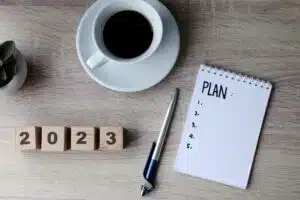
Revolutionising Energy Management in UK Businesses
In an era where sustainability is not just a buzzword but a business imperative, UK companies are increasingly turning to innovative solutions to manage their
We all understand the damage that Carbon Dioxide can cause. You only have to look at our planet and the change in climate to see how harmful Carbon Dioxide can be. It is almost impossible to avoid Carbon Dioxide as it is found naturally in the atmosphere but of course, there are many different reasons why the amount of Carbon Dioxide in the atmosphere might rise.

If you are exposed to Carbon Dioxide levels of more than 2000 ppm, then people might experience a range of symptoms such as sweating, headaches, and shortness of breath. While the gas might have a direct impact on our health, it is possible to use Co2 as a way of measuring ventilation, viral risk, and indoor air quality (IAQ) indirectly.
So, when it comes to commercial buildings, what is an acceptable level of Co2, and what do you need to know?
To determine what other air pollutants are present, it is important to monitor the level of indoor Co2. By measuring Co2, it is possible to indirectly measure the IAQ. However, in addition to this, it can also work as an indicator of the risk of viral transmission.
The reality is that carbon dioxide levels indoors can vary considerably, and this means that the figure can range from several hundred ppm to more than 1000 ppm. There are several reasons for this, and this can include the number of people in a room and how long people spend in the room. The size of the space also impacts the level of carbon dioxide and the amount of outdoor air that is being ventilated while other pollutants nearby such as vehicle exhausts will also have an impact on the overall figure.
Combustion causes Co2 and this can be increased by vehicle exhausts as well as furnaces. Along with this, other products can also be generated such as carbon monoxide or particulate matter, both of which can cause serious health issues. Furthermore, where adequate ventilation is not in place, Volatile Organic Compounds can emit from building materials and furnishings. What this means is that even though high levels of Co2 will not cause direct health issues, it can highlight that there is poor ventilation and a low level of indoor air quality.
In the workplace, research shows that poor ventilation can have an impact on productivity and cognitive ability. Therefore, it makes perfect sense to ensure you have the right systems in place to monitor levels and create a healthier environment.
The main contributors to carbon dioxide in the workplace are the occupants of the building. This means that increased levels of Co2 can be used as a way of measuring the rate of occupancy and ventilation. What this means is that ventilation is vital as it can help to reduce the spread of viral infection, and this is being considered as changes are being made at the national level. As a result, as of June 2022, all office buildings have to have Co2 monitors installed.

The level of Co2 that is acceptable in a building can differ from one country to another but in the UK, some levels are considered to be acceptable when it comes to indoor spaces.
When it comes to indoor air quality, if the level of Co2 is 800 ppm or less, then this will indicate that the indoor space is considered to be well-ventilated. Where levels are consistently at 1500 ppm or above then this indicates that ventilation is not sufficient and that measures should be taken to improve the situation.
Some guidelines also differ from one country to another and as an example, in the United States, it is recommended that exposure to Co2 over an average period of 8 hours should not exceed 5000 ppm. In addition to this, it is also recommended that the level of indoor Co2 should not exceed 700 ppm. Other countries, such as Portugal, France, and Japan, have set their levels of Co2 to 1000 ppm for indoor settings. Despite this, in the UK, the responsibility of managing levels falls in the hands of employers.
As mentioned, from June 2022, it has become mandatory to have Co2 monitors in office buildings to ensure that the right levels are maintained. This helps employers to determine what, if any, ventilation is required and so, this has been incorporated into Building Regulations as a way of improving air quality and ventilation in both residential and commercial buildings.
What this means is that it is especially important to have the right measures in place that make it possible to monitor and report findings, as well as take the right action. Some employers have found this a challenge because they do not have the right solutions or systems in place.
They might rely on older technologies that only take one-off air quality readings. As a result, businesses are unable to manage air quality accordingly which is a time-consuming process. Furthermore, reporting the findings can also prove a challenge but it is vital as employees expect a certain level of air quality in the workplace. Again, with the older technology being used, obtaining detailed reports can prove difficult. These reports will not provide the wide range of data that is needed to take the necessary steps. They require manual input but also the ability to understand complex data as reports are not simplified.
The next challenge is to take the right course of action. When employers lack data, how can they make informed decisions? It is not just the symptoms of poor air quality that have to be dealt with but also the source of the problem, as this ensures that poor air quality is dealt with accordingly. As a result, businesses require a wealth of information such as historical data, but also other indicators such as occupancy levels.
This is clear proof that it is vital to use the latest solutions to make the right choices. With the latest technology, businesses can interpret data in real time and then make the necessary changes, ensuring the health of the workplace is managed efficiently.

Indoor air quality is really important to maintain and manage, especially now that mandatory levels have been brought in. However, with the right systems and solutions that are scalable, it is possible to effectively manage and monitor Co2 levels.
This can be achieved by implementing the right smart sessions that are automated and help to reduce the need for maintenance. Furthermore, having the ability to access data in real-time and share it with management teams, makes it possible to report on air quality efficiently. This data is accessible around the clock making it possible to make informed decisions when problems or issues arise.
One of the most important things when optimising air quality is the ability to take proactive action. Improved indoor air quality is not just about the right ventilation but it is also about monitoring other factors such as the number of people in the space. Along with this, it is about taking other pollutants into consideration including the likes of radon gas and VOCs. With the ability to analyse real-time data and historical data, it makes it possible to make evidence-based decisions.When you take a proactive approach to indoor air quality, it will bring with it a range of benefits. When you choose the right system, you will be able to reduce and manage viral risk. As a result, you will be able to reduce the number of staff absences as the viral transmission is reduced at the same time.
One important benefit is having the scope to optimise the space that you have. When you monitor levels, you will be able to use real-time data to understand the level of occupancy throughout the time. As more occupants use space, you can improve ventilation, helping to keep levels low. At Envelo, we provide an IoT solution to ensure the CO2 levels in your building are monitored and controlled at ease.

Poor air quality is linked to a lack of productivity as it can lead to fatigue and confusion, and this is why seven out of ten employees want improved air quality. So, when you optimise air quality, you will see an improvement of 50% in productivity.
Finally, maintenance can be reduced when you manage air quality because it helps to prevent the likes of mould and mildew which can cause problems with equipment, health, and building quality.
Therefore, this indicates that air quality is hugely important. Taking the right steps will ensure that you can actively manage air quality using the correct systems. This will make your workplace safer, more comfortable, and more productive, which can have a significant impact on the success of your business.

In an era where sustainability is not just a buzzword but a business imperative, UK companies are increasingly turning to innovative solutions to manage their

In the dynamic world of work, it is crucial to adapt to emerging trends that shape the future of our workplaces. As we approach 2023,

Embracing Innovation with Envelo for Sustainable Business Operations In today’s business landscape, there has been a remarkable shift in the way organisations approach energy consumption.
Complete our survey below to see how your business performs.
Wanting to improve your workplace health and well-being, whilst reducing workplace sickness and improving productivity? Book a demonstration with one of our team today, and see how Envelo can monitor, manage and improve your workplace environment.
Envelo protects people from viruses and pollution and helps improve their wellbeing using prevention methods and app-driven monitoring technology.

Envelo Solutions Ltd (Company Number: 13100630)
Complete the form below to see Envelo’s smart technology platform in action. We’ll get back to you within 24 hours to schedule the best date and time to suit you.